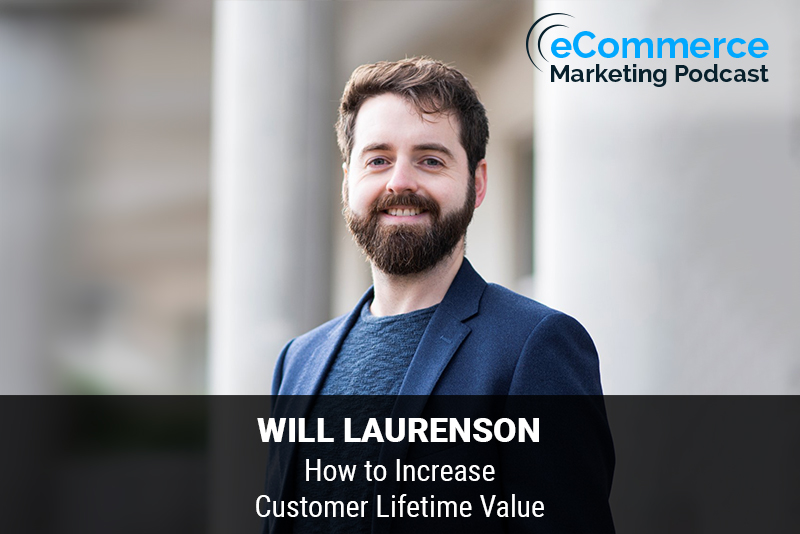
The eCommerce Marketing Podcast walks you through everything that goes into ecommerce marketing — from inbound marketing to paid advertising to conversions. Learn the strategies top marketing experts use to grow their businesses.
Marketing Strategies Revealed in this Episode:
- What elements comprise the customers onsite experience?
- Ways to optimize the onsite experience
- Ways to improve the customer’s post-purchase experience and why is this essential for increasing the customer’s lifetime value
- Businesses that have been successful with providing an awesome customer experience and the key things they have done to do this

Episode Title: Enhancing Customer Experience with Will Laurenson
Host: Arlen Robinson
Guest: Will Laurenson, Founder of Customers Who Click
Summary: In this episode of the Ecommerce Marketing Podcast, Arlen Robinson interviews Will Laurenson, a customer value optimization consultant and the founder of Customers Who Click. Will shares insights on improving the customer experience on ecommerce websites, emphasizing the importance of addressing on-site issues, post-purchase interactions, and overall customer satisfaction to enhance conversion rates and customer lifetime values.
Key Takeaways:
- Introduction and Background [00:00]
- Will’s experience in startups and the importance of focusing on customer needs in product development and marketing.
- The significance of marketers working closely with product teams to ensure customer-centric features and processes.
- Importance of Customer Experience [06:00]
- Addressing common shortcomings in customer experience that are often overlooked by businesses.
- The impact of clear and easy-to-use websites on conversion rates and customer satisfaction.
- Elements of On-Site Customer Experience [12:00]
- Ensuring the website is user-friendly, with clear product information and an easy checkout process.
- The importance of offering various payment methods, including newer options like Klarna and Apple Pay, to improve conversion rates.
- Post-Purchase Experience [20:00]
- The value of personalized follow-ups, whether through emails or phone calls, to check on customer satisfaction.
- Avoiding premature requests for reviews and focusing on genuine customer support to build trust and loyalty.
- Tactics for Smoothing Post-Purchase Experience [27:00]
- Utilizing services like Bonjoro for personalized video messages to enhance customer relationships.
- The importance of selecting reliable delivery partners and providing transparent, real-time tracking information to customers.
- Successful Customer Experience Examples [36:00]
- Games Workshop: Providing knowledgeable in-store staff and excellent post-purchase support to build strong customer relationships.
- Prioritizing customer satisfaction over immediate profits by addressing issues promptly and effectively to encourage repeat business.
Guest Info:
- Name: Will Laurenson
- Position: Founder of Customers Who Click
- LinkedIn: Will Laurenson on LinkedIn
- Twitter: @WillLaurenson
For more insights and to connect with Will Laurenson, visit Customers Who Click.











